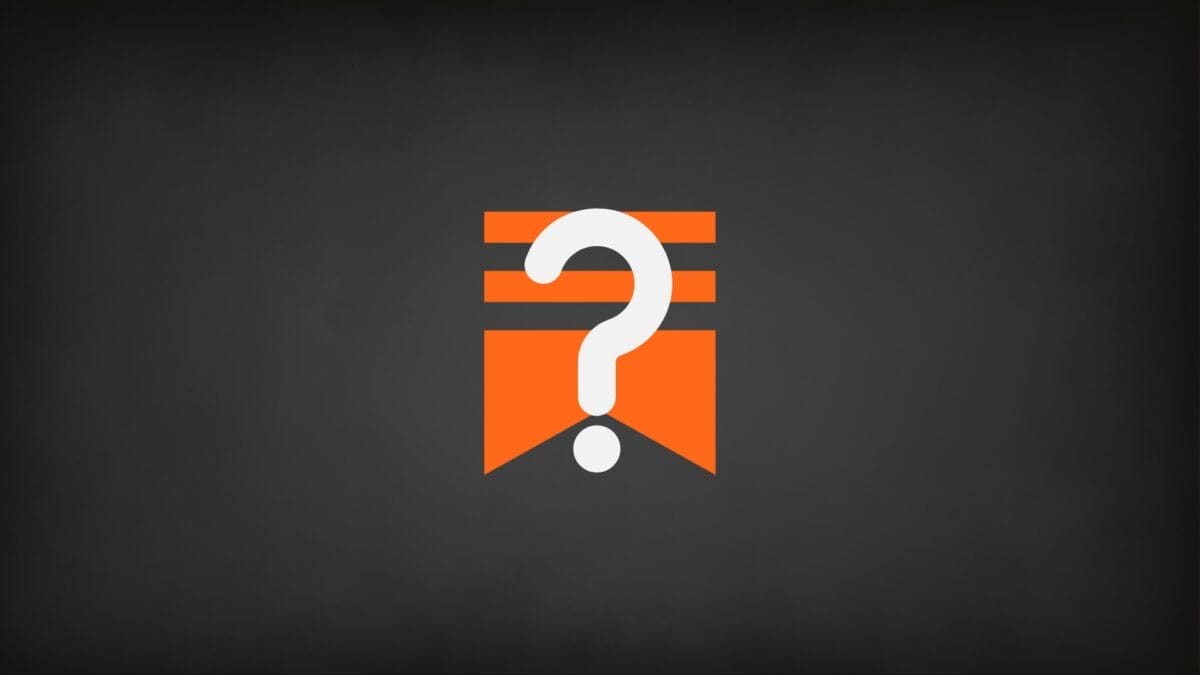By Ernie Smith
It seems like, almost weekly, a member of the media establishment that once lived in a traditional newsroom has moved to a platform that I was one of the very first people to turn down.
Among the recent big names to join: Derek Thompson. Terry Moran. Chuck Todd. Joy Reid.
All came on board for different reasons. Thompson, who spent 17 years at The Atlantic, just published a bestseller with Ezra Klein, Abundance. Moran was fired from ABC News for a mildly edgy tweet that made Stephen Miller mad. Chuck Todd chose not to renew his contract with NBC News. Joy Reid’s stalwart MSNBC show got cancelled.
All were at a crossroads, and like earlier establishment journalists like Zeteo’s Mehdi Hasan (previously of MSNBC) and Chris Cillizza (previously of CNN), the road led to Substack. If you’ve built yourself some establishment cred and need a career change, Substack is the move.
The Washington Post, which literally has a website and as much technology as you can shake a stick at, wants to move its writers to Substack, too, even though it does not, and has never, required it.
But it’s also a trap. Writers, journalists, podcasters, and any other multimedia professional should be mindful the platform has always seen newsletters as a means to an end. Substack speaks about its mission in high-minded ways, but its motivations are maximum growth and engagement, not a quality experience, and certainly not a flourishing writer class or a grandiose intellectual wonderland.
If your goal is to have people see your writing, Substack feels like it’s starting to shift out of that lane, into areas far afield from where it started. This is a weird thing to write, but Substack wants to compete with TikTok.
But if the goal of newsletters is to make us less dependent on someone else, leaning so hard into a platform that could gradually wobble or enshittify seems like a bad way to do it. Yet, the pressure to build a Substack, not a newsletter, is persistent, a constant drumbeat on independent writing.
It wasn’t always that way, and it doesn’t have to be that way.
A little newsletter pre-history
There was once a time when newsletters were quiet relics of an earlier era. They had been a forgotten, neglected medium, only really useful for marketing.
That left an opening, and a company stepped into it.
That company was TinyLetter. (I bet you thought I was going to say Substack; I’m getting to them.) Formed in 2010 by Philip “Pud” Kaplan—who first gained online notoriety as the creator of Fucked Company, a famed early-2000s website that documented the failings of the dot-com boom—TinyLetter had modest goals and a modest community.
It was a tiny idea that sprouted a far bigger one—that regular people could make newsletters and send them to people. Numerous popular newsletters sprouted out of that spark.
But there was a problem: It didn’t really have a business model, and the company that bought it, MailChimp, didn’t seem to have any good ideas for giving it one. The email-marketing provider mostly used it as a feeder system to its own service. Simon Owens, a media reporter and former TinyLetter user, later called the service “one of the greatest missed opportunities in tech.”
But the newsletter space began to flourish anyway. Early newsletters like Rusty Foster’s Today in Tabs and Laura Olin’s Everything Changes set the style of the form. My little newsletter, Tedium, which started on MailChimp before going to all sorts of bizarre places, also played a role.
It’s obvious now, but TinyLetter’s position as a farm system for free newsletters left another, completely different opening. It capped out at just 5,000 subscribers—and forced growing newsletters to transfer to MailChimp, which charged based on the number of subscribers you had, meaning that successful noncommercial newsletters suddenly needed a business model. Worst of all, MailChimp seemed to discourage editorial newsletters with its own marketing, instead focusing on e-commerce.
That was the model Substack came around to exploit. Substack realized that if it charged on the back end, by taking a cut of paid subscriptions, it could ensure a reasonable, consistent profit for both its publishers and itself. If it got the right writers, it could be very lucrative.
At first, this seemed promising. People who had already been in the space, like myself, got emails from Chris Best or Hamish McKenzie, seeing if we might sign up. (I got the email when there were literally two publishers on Substack—Bill Bishop and Daniel Lavery. I ended up not going with it because I was uncomfortable with the idea of paywalling my writing, and design was important to me. Both of those things are still true.)
When did a newsletter become a Substack?
But over time, the Substack model—and the problems with it—became harder to ignore. Substack is low friction, making it easy to join, but you’re limited with how much you can stretch its design. That meant it evolved into a popular place for existing journalists and writers to put their writing, along the lines of what Medium was a decade earlier.
Over time, it became clear that Substack wanted people to build a “Substack,” not a newsletter. It started adding features that moved further and further beyond its goals, including a Twitter-like social network called Notes and video capabilities. It made it so that people defaulted to getting its articles through an app instead of their inbox.
(Aside: Substack’s desire to transform itself into a TikTok-like video hub follows in the footsteps of X, YouTube, Instagram, Snap, Patreon, and pretty much every social network that could remotely be called a competitor. Totally original play. No notes.)
The company added features that went beyond newsletters, so it would be a harder sell if you wanted to leave. Like chatting with your subscribers, or having a dedicated comments platform? Sure, you can take your subscriber list, but think of all the stuff you’re giving up!
In a way, it’s not uncommon for phrases to be tied to commercial entities. While the term “blog” was not created by Blogger, Evan Williams’ early company did a lot to mainstream it—just as his later company, Twitter, mainstreamed “tweets.” Google was so dominant that it became a verb still widely used today. We call video creators YouTubers. And going further back, Adobe’s Photoshop became so widely associated with image manipulation that we still call it Photoshopping.
But email is email. It has noncommercial roots, and Substack didn’t invent the newsletter. It simply found a way to make it an attractive publishing medium. They want you to call it a Substack, because they know it can steamroll newsletters with the right thrust.
Substack and the problem of making too many bets
All those features Substack added are not just ways to keep you on their site. They also represent ways that the model has morphed thanks to outside influence.
If you run a company with a seeming growth trajectory, accepting a funding round is like getting an extra hand when playing a piano. When you’re just starting out, maybe you just have one hand to dedicate to playing the melody you’ve chosen. (The other hand is holding up the thing you built so it doesn’t collapse.) It sounds graceful, beautiful, but there’s not much room to create diverse sounds. Plus, your arm’s getting tired from having to do all the work yourself.
You need a second hand, and there are two ways to make it happen: incrementally, as competing platforms like Buttondown and Ghost have done, or by pulling in additional funding, which can let you play a complex melody right away. The problem with that funding is that the hand isn’t actually yours, and they may want to play the melody in a different key.
And worse: Even with the extra hand, you still may not be playing fast enough. There’s a risk you’ll run out of stamina, and the song might stop.
So you pull in another hand. And over time, maybe another. As a company deeply invested in VC keeps playing the same piano they started with, there suddenly might be so many hands tapping keys, often out of unison, that suddenly, your original melody gets lost. But you, the founder, keep playing, trying in vain to make the song structure fit your original vision. Eventually, if you get too over-invested in VC, there’s a finger on every single key, and the song becomes unrecognizable.
While I can’t say for sure if that’s what happened to Substack, their mission has certainly drifted far from its original goal of making it easy to send a newsletter. Every new feature—video, chat, notes—is a bet that this will be the thing to keep you (and your list, and their cut) around, the killer feature that makes this tool better than any individual newsletter tool. Enough bets, and you have a self-sustaining business. Or, at least, a large one, teetering like a house of cards.
Large businesses are often highly unfocused, and their missions can drift significantly from their original goals as more hands get involved. Substack is still nominally a creator platform. But it’s not hard to see the company getting a few more Terry Morans and realizing the real action might be in a pivot to video.
Ana Marie Cox recently highlighted the company’s fundraising history. Going back to the piano metaphor, they’ve really struggled to find additional hands to sustain the melody. In 2022, the company tried to raise $100 million to push a Twitter-like expansion, and failed. Its most recent funding round had a questionable VC backer, Omeed Malik of 1789 Capital, Don Jr.’s current employer. And it’s now trying to raise even more.
It may have started as a newsletter tool, but it’s now a very complex thing. It not only has to support a large audience of publishers and readers, but all these aspirational funders, some of whom are Substack writers. (Yes, the company did a round supported by its own writers.)
Those writers may have skin in the game, but VCs throwing in millions or even tens of millions of dollars to keep the piano playing have way more control over what the song eventually sounds like. On July 17th, The New York Times revealed Substack raised another $100 million in Series C funding and plans to invest heavily into the app.
At Substack, ownership can change the tune at any time. And you’re left without a say.
The problem with network effects
Half a year ago, Substack expat Luke O’Neil of Welcome to Hell World posted a skeet that effectively punctured a hole in one of Substack’s “killer features,” the strength of its network effects. The pair of screenshots, which showed hundreds of people named Nguyen flooding his signups, points at a serious problem that doesn’t get talked about much: Substack has loosened its signup rules. It’s easier to make “number go up” when bots with fake email accounts are driving the upward swing.
But what’s worse is that for existing accounts, there is a notable dark pattern. Essentially, anyone can sign anyone up for an email, no verification required. Many services require double-opt-in verification—in part because publishers hate spam signups, which ruin our analytics, and in part because of compliance considerations. Not Substack, which defaults to letting all that stuff through.

Oh, sure, Substack has features in its settings to stem the tide of spam—“Require email verification when subscribing” for readers, “Require email address confirmation” for writers. But these are defaulted to off, which is not very secure. In the case of readers, that means anyone with your email address can sign you up to their list without asking—and that occasionally leads to some salty Reddit threads.
Some network effects. Sure, recommendations are great, but if you ask me, I’d love to see us do the work of making those work using the internet’s native capabilities. Ghost has done this, leveraging the existing Webmention standard for this purpose. But, for one reason or another, we forgot this was possible.
In the early days of the internet, we found ways to make network effects work without a middleman. Webrings ruled the land. We had guestbooks that people could sign.
But layers of dust started to cover these features, as the desire for ever-increasing revenue changed how we thought about technology. For decades, we’ve been afraid of putting in the extra work to get a great experience, so we default to an okay one.
Sure, Substack has a network. And its network has effects. But there’s no reason, if you run a publishing business, that you actually need it. As users, we keep investing in someone else to solve our problems for us, so we can focus on the thing. I think that’s a real trap.
Don’t let the middleman shape your newsletter
Much has been written about the ways LLMs lower our cognitive load, causing us to lose important critical thinking skills. But this was happening long before LLMs even existed. Web 2.0 specialized in this, in fact. Companies, even the good ones, often offer us an easy solution, but can cost us the ability to gain technical skills.
I’m not saying you need to code to build a newsletter, but platforms exist to hide the work from you. The work is hard, but it teaches you things. I learn a lot when I’m in VS Code, trying to build a new iteration of my website or fixing some weird bug.
So, if you ask me: Don’t run a Substack, run a newsletter. And if you decide to stay on Substack, don’t buy into their branding.
I’m not telling you to leave, which I think many articles like this do, I believe unfairly. It’s your business, and it’s unfair for someone like me to fling darts at your hard work. I trust you have your reasons for favoring one platform over another. And given how many people have stuck by X even with its cultural changes, I get that inertia is a hell of a drug.
But it’s your newsletter, not theirs.
Ernie Smith is the editor of Tedium, a long-running newsletter that finds its network effects the hard way. His words have been published in Vice’s Motherboard, Fast Company, and IEEE Spectrum. His spicier takes are on Bluesky.
Editor’s note: This article was updated to reflect the recent $100 million investment in Substack, which was announced three days post publication.




